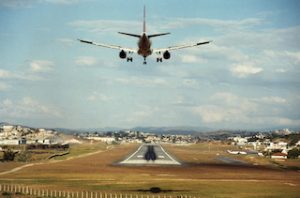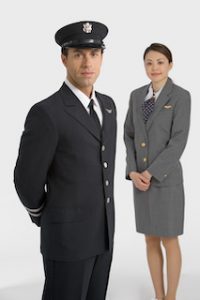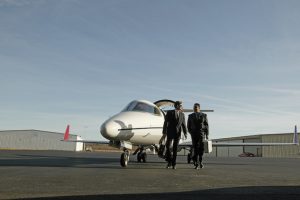The Future Of Loft Flight Training
 Line Oriented Flight Training has become a fundamental component of modern aviation training, simulating real-world flight operations to prepare pilots for complex, dynamic scenarios. As the aviation industry evolves, so too does the approach to LOFT. This article explores the future of LOFT flight training, examining emerging trends, technological advancements, and the evolving needs of the aviation industry.
Line Oriented Flight Training has become a fundamental component of modern aviation training, simulating real-world flight operations to prepare pilots for complex, dynamic scenarios. As the aviation industry evolves, so too does the approach to LOFT. This article explores the future of LOFT flight training, examining emerging trends, technological advancements, and the evolving needs of the aviation industry.
Understanding LOFT
Before delving into the future of Loft flight training, it is crucial to understand its current framework. Line Oriented Flight Training is designed to replicate real-world flying conditions, focusing on the integration of multiple procedures, decision-making processes, and crew resource management. LOFT scenarios often involve realistic simulations of flight operations, emergencies, and various environmental conditions, allowing pilots to hone their skills in a controlled yet challenging setting.
Emerging trends in LOFT
-
Integration of advanced technologies
The future of LOFT is heavily influenced by the integration of advanced technologies. As technology continues to advance, flight training programs are incorporating cutting-edge tools to enhance the realism and effectiveness of LOFT.
-
- Virtual reality and augmented reality: Virtual reality and augmented reality are set to revolutionise LOFT by providing immersive and interactive training experiences. VR can create highly realistic flight environments and scenarios, allowing pilots to experience and interact with various flight situations as if they were in an actual cockpit. AR, on the other hand, can overlay additional information and guidance within the pilot’s view, enhancing situational awareness and decision-making.
- Artificial intelligence: Artificial Intelligence has the potential to transform LOFT by introducing adaptive and personalised training experiences. AI-driven simulators can analyze pilot performance in real-time, adjusting scenarios and challenges based on individual strengths and weaknesses. This level of customization ensures that pilots receive targeted training, addressing specific areas for improvement and enhancing overall proficiency.
- Data analytics and performance monitoring: Data analytics is becoming increasingly integral to LOFT programs. By collecting and analyzing data from flight simulators, training organizations can gain valuable insights into pilot performance and training effectiveness. Performance metrics, such as decision-making speed, error rates, and adherence to procedures, can be used to tailor training programs and provide detailed feedback to pilots.
2) Increased focus on human factors and CRM
Human factors and Crew Resource Management are critical components of LOFT, and their importance is expected to grow in future training programs. Effective CRM involves managing communication, teamwork, and decision-making processes within the cockpit, and addressing human factors is essential for optimising these interactions.
-
- Enhanced CRM training modules: Future LOFT programs are likely to include more advanced CRM training modules that focus on interpersonal skills, leadership, and conflict resolution. Scenarios will be designed to test and improve pilots’ abilities to work collaboratively, handle stress, and manage resources efficiently. This emphasis on CRM will help ensure that pilots are well-equipped to handle complex and high-pressure situations.
- Human factors integration: Integrating human factors into LOFT involves understanding how psychological and physiological aspects affect pilot performance. Future training programs will incorporate simulations that address factors such as fatigue, stress, and cognitive load. By exposing pilots to these conditions, training can better prepare them to manage these challenges in real-flight situations.
3) Customisation and personalisation
Personalized training is becoming a significant trend in LOFT, as training programs are increasingly tailored to individual pilot needs and skill levels. Customisation allows for more targeted and effective training, ensuring that pilots receive instruction that addresses their specific areas for improvement.
-
- Adaptive training scenarios: Adaptive training scenarios are a key feature of personalised LOFT programs. By using AI and data analytics, simulators can adjust scenarios based on the pilot’s performance and progress. This adaptability ensures that each pilot encounters challenges appropriate to their skill level, promoting continuous development and proficiency.
- Personalised feedback and coaching: Future LOFT programs will provide more detailed and personalised feedback to pilots. Advanced analytics will offer insights into specific performance metrics, allowing instructors to provide targeted coaching and support. This personalised approach will help pilots focus on areas needing improvement and enhance their performance.
4) Regulatory and industry changes
The aviation industry is constantly evolving, and regulatory changes and industry standards will impact the future of LOFT. Training programs will need to adapt to new regulations, emerging best practices, and evolving safety standards.
-
- Compliance with new regulations: As regulatory bodies update standards and requirements, LOFT programs will need to align with these changes. Future training programs will incorporate new regulations related to safety, performance, and operational procedures, ensuring that pilots are trained in accordance with the latest industry standards.
- Adoption of best practices: The adoption of best practices in LOFT will be driven by ongoing research and industry developments. Training organisations will continually update their programs to reflect the latest findings and recommendations, ensuring that pilots receive the most current and effective training.
5) Simulation and training environment innovations
The training environment itself is expected to undergo significant innovations, enhancing the realism and effectiveness of LOFT.
-
- High-fidelity simulators: Future LOFT programs will utilise even more advanced flight simulators with high-fidelity graphics, realistic motion systems, and accurate aircraft systems. These simulators will provide an immersive and lifelike training experience, closely replicating real-world flight conditions.
- Collaborative training platforms: Collaborative training platforms will become more prevalent, allowing pilots to train together in virtual environments. These platforms will enable pilots to practice teamwork, communication, and coordination in a shared simulation, fostering better collaboration and mutual understanding.
Benefits of future LOFT developments
The advancements in LOFT discussed above offer numerous benefits for pilots, airlines, and the aviation industry as a whole.
- Enhanced pilot proficiency: By incorporating advanced technologies and personalized training, future LOFT programs will significantly enhance pilot proficiency. Pilots will be better prepared to handle complex and dynamic flight situations, improving overall flight safety and operational efficiency.
- Improved safety and risk management: Advanced simulations and data analytics will enable more effective risk management and safety measures. By identifying potential weaknesses and areas for improvement, training programs can help prevent incidents and accidents, contributing to a safer aviation environment.
- Increased training efficiency: Personalised and adaptive training scenarios will make LOFT programs more efficient, allowing pilots to focus on their specific needs and progress more rapidly. This efficiency will reduce training time and costs while maximising the effectiveness of the training.
- Better adaptation to industry changes: The ability to quickly adapt to regulatory changes and industry developments will ensure that LOFT programs remain relevant and effective. This adaptability will help pilots stay current with the latest standards and best practices, maintaining high levels of competence and compliance.
Conclusion
The future of Line Oriented Flight Training is poised to be shaped by technological advancements, evolving industry standards, and a greater emphasis on personalised and realistic training experiences. As virtual reality, artificial intelligence, and data analytics become integral to LOFT, pilots will benefit from more immersive, adaptive, and effective training programs.
By embracing these innovations, the aviation industry will continue to enhance pilot proficiency, improve safety, and optimize training efficiency. The ongoing evolution of LOFT reflects the industry’s commitment to excellence and its dedication to preparing pilots for the challenges and complexities of modern flight operations. As LOFT continues to advance, it will play a crucial role in ensuring that pilots are well-equipped to navigate the future of aviation with skill, confidence, and safety.










